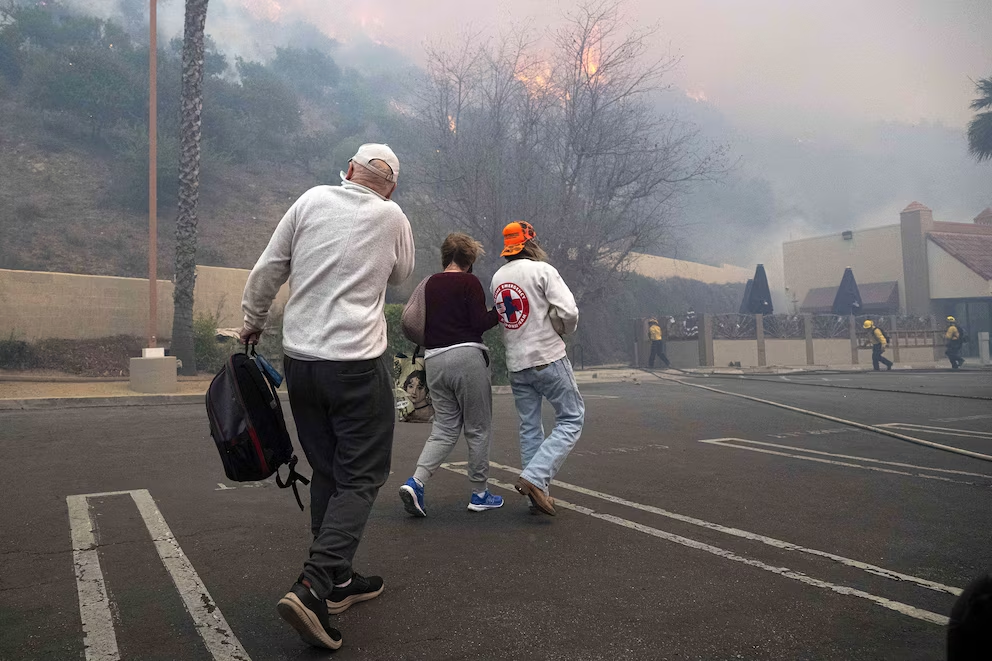A powerful undersea earthquake today near Russia’s Kamchatka Peninsula has triggered a widespread tsunami warning along the West Coast, prompting emergency alerts and evacuation advisories from California all the way up to Washington.
A massive earthquake today off Russia’s Kamchatka Peninsula has sent a ripple of anxiety across the Pacific, as coastal residents along the West Coast brace for the arrival of tsunami waves. The Russia earthquake, initially measured at a staggering magnitude 8.8, ranks as one of the strongest recorded in modern history—tied for sixth worldwide.
Following the quake, a tsunami warning was issued for parts of Alaska and the entire Hawaiian Islands, along with a tsunami advisory for much of the California coastline. Emergency agencies from Washington to California activated response plans, and in some locations, evacuation orders were issued.
Tsunami Warning Levels: What Do They Mean
The U.S. Tsunami Warning Center https://www.tsunami.gov/ operates a three-tier alert system: watch, advisory, and warning. What was issued today represents the most serious level—a tsunami warning, which signals that dangerous waves are imminent or already happening. Residents in those areas are urged to move inland immediately.
Across Hawaii, residents were seen evacuating to higher ground earlier in the evening, while Alaska’s Aleutian Islands also came under threat. Fortunately, the mainland West Coast remains under a tsunami advisory, meaning that strong currents and hazardous waves are still expected and people should stay well away from beaches and coastal waterways.
California Tsunami: Measurable Waves Along the Coast
While the full-force tsunami didn’t hit California with catastrophic energy, measurable waves have already reached several coastal points:
- Crescent City saw 1.5-foot waves around 12:30 a.m.
- Arena Cove in Mendocino County recorded 1.6 feet just after 1:00 a.m.
- Monterey measured 1.4 feet around the same time.
- Los Angeles Harbor saw waves around 1:05 a.m.
- Santa Barbara logged activity at 12:50 a.m.
- Newport Beach at 1:10 a.m.,
- La Jolla at 1:15 a.m.,
- San Francisco recorded wave action at 12:50 a.m.
While these may sound small, the National Weather Service warned that even 1-foot tsunami waves can generate powerful surges, especially during high tide. Strong and unusual currents in marinas and bays are particularly dangerous for boats and anyone in the water.
High Tide Could Make Things Worse
According to NWS meteorologist Ryan Aylward, the most dangerous period was expected to occur around 3:30 a.m., when the incoming waves would coincide with high tide. During this window, waves as high as 3 to 5 feet were forecast in some locations, particularly in low-lying coastal areas. That height, combined with high tide, has the potential to cause minor to moderate coastal flooding.
In Crescent City, residents were urged to evacuate boats from the harbor and leave the Lighthouse Cove RV Park, a particularly vulnerable area. A temporary evacuation center was set up at the VFW Hall for those needing shelter.
L.A. and SoCal: Low Waves, But High Risk
In Los Angeles, wave heights were predicted to stay below 1 foot. Still, officials urged everyone to stay off the beaches and out of harbors, stressing that even smaller tsunami waves carry enough force to knock over adults, damage vessels, and drag debris into the water.
Officials are taking no chances, especially with previous tsunami events in California’s history—like the 2011 tsunami after the Japan earthquake, which caused millions in damage at Crescent City’s harbor alone.
A Global Shake With Local Consequences
The Russia earthquake struck relatively close to shore, which is key to the tsunami threat. As Dr. Mohammad Kashani, a structural engineering expert at the University of Southampton, explained:
“Shallow earthquakes release enormous amounts of energy and, in this case, its location near the coastline triggered a tsunami.”
Early footage out of Russia shows just how powerful this event was. Videos shared by Reuters show buildings, believed to be warehouses, being swept away by tsunami currents in Russia. Over in Hokkaido, Japan, a 1-foot wave hit the Nemuro Hanasaki port shortly after the quake, according to NHK.
What Now for the West Coast?
As the night rolls on, coastal agencies across California, Oregon, and Washington continue to monitor wave activity. Tsunami waves often come in a series, and the second or third wave can be stronger than the first. The U.S. Tsunami Warning Center has urged people to remain cautious for several more hours, even if initial waves appear mild.
In Southern California, most beaches are closed as a precaution, and harbors remain under watch for erratic currents. In Northern California, especially in Del Norte and Humboldt Counties, emergency responders remain on alert.
Final Thoughts
Tsunamis are often unpredictable, and today’s event was a clear reminder of how interconnected the Pacific truly is. An earthquake on one side of the ocean can bring waves to the other side in just hours. Thanks to the swift response by warning systems and emergency crews, coastal residents have had time to prepare, avoid danger zones, and respond calmly.
As morning approaches, and with high tide now behind us, the California tsunami threat appears to be easing—but the importance of vigilance remains. If you live near the coast, stay tuned to local alerts, and don’t return to the water until officials declare it safe. What looks calm can turn dangerous fast. Let’s hope this one passes with minimal impact—and that we continue to improve how we prepare for the next one.





